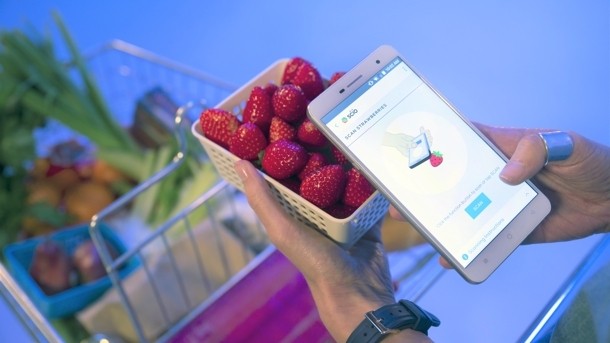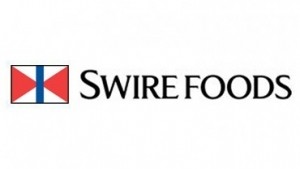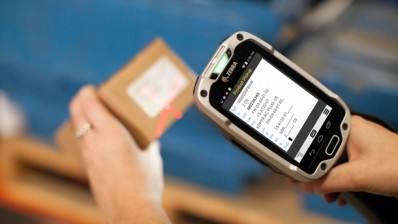China direct
Chinese start-up gearing up for launch of food-sensing smartphone

The Changhong H2, featuring components made by a Consumer Physics, boasts a tiny near-infrared spectrometer that can analyse the pattern of light it reflects to determine the composition of an object.
"The smartphone can be used to detect materials and analyse their makeup instantly," said Dror Sharon, chief executive of the Israeli molecular sensor manufacturer.
He said that consumers will be able to use it to analyse body metrics and the properties of foods and liquids, effectively giving them new ways to “select the best fruits and vegetables, stick to their diets and nutritional needs and verify product authenticity in ways never before thought possible”.
The phone’s manufacturer, Changhong, is also working to create a broad ecosystem of mobile apps that can integrate with the phone’s SCiO material-sensing technology for a wide range of other uses.
As it works on a molecular level, the SCiO sensors could in theory be used on almost any material, from identifying the composition of alcoholic drinks, to process control using a corresponding ingredient database.
At a grocery store, for example, the H2 could help pick out the freshest apples or ripest tomatoes, based on a quick analysis of their chemical makeup. It could also report on calories, carbs, protein and fat at a restaurant, say its manufacturers.
“We look forward to working closely with third-party developers via an SDK that they can use to develop their own applications for the Changhong H2 smartphone,” said Jin Li, president of Sichuan Changhong Electronics, which will distribute the phone.
Its CSiO sensor will also be capable of detecting chemical contamination in a food through a utility that will be introduced only after the phone is launched.
The H2 will not be the first consumer portable spectrometer, if and when it goes to market. Canada’s crowdfunded TellSpec was launched in 2013 with the promise of scanning for allergens, though reviewers at the time noted a number of limitations.
Four years later, once the new phone completes its development it faces a massive potential market of consumers wary of the safety of the foods they eat. Its success, of course, depends on the quality of its readings to inspire confidence in its users.
If accuracy can be assured in the event of its launch, then the H2 could actually bring about the “sea-change” in consumer food standards that its manufacturers promise in their promotional literature.
More stories from China...
Hong Kong’s Swire to bet big on bakery investment on mainland
Cathay Pacific’s parent plans to nearly double the size of its retail bakery business by 202, to become one of the biggest bakers in China.
Over the next three years, Swire Pacific will increase the number of its bakery shops in Chongqing, Chengdu and Guiyang to 1,000 through its wholly owned Swire Foods subsidiary.
According to South China Morning Post, the conglomerate believes the benefits from stable, long-term growth from the food market outweigh the small scale of the business, compared with Swire’s aviation and property businesses.
Last year, Swire Foods took full ownership of Qinyuan, a leading bakery chain, for HK$1.4bn (US$200m). Selling Chinese and Western-style pastries, it added over 500 retail outlets in Southwest China to Swire’s portfolio. The deal also included a 65,000 square-metre factory producing bakery goods in Chongqing.
“Bakery is a very market fragmented market in China. We have not yet seen any player dominating the market [so] there a a big opportunity there,” said Max Lau, managing director of Swire Foods, told SCMP.
He said that the demand was due to rise because Chinese per-capita consumption was currently low, with an average spend on bakery goods of around just 140 yuan (US$20) per person per year.
This is half the amount spent in Singapore, while Hongkongers spend three times as much as the mainland, and Japanese spend close to seven times as much for their baked goods.
“Food still serves a basic need for everyone despite the economic slowdown in China,” Lau added.
“[Moreover] the retail business is being challenged by the rise of e-commerce in China these days, but food retail cannot be replaced by e-commerce just yet,” he said.
Hong Kong upgrades quality standards system
Hong Kong’s quality assurance watchdog has teamed up with two foreign standards organisations to create a scheme to improve the traceability of products in a supply chain that sees more than 90% of its goods imported.
Global supply-chain standards organisation GS1 joined with audit partner British Standards Institution and the Hong Kong Quality Assurance Agency to devise the new standards.
It is expected that it will take up to two years before they are fully implemented in the form of the Quality Food Traceability Scheme.
The audit system will cover 12 criteria, including procedures, resource management and supervisory controls, and will grade applicants into three tiers of silver, gold and diamond.
Accredited firms will be given use of QR codes on their packaging, while consumers will scan products with their smartphones to retrieve information such as manufacturing date, location and even logistics procedures.
Initiated in 2015 for launch two years later, the QFTS is an “enhanced” version of the current standards scheme that “will benefit local food companies to achieve food traceability compliance and best practices on a global scale,” said Anna Lin, chief executive of GS1 Hong Kong.
“It was jointly developed by hundreds of industry practitioners in over 20 countries, including FDA, WHO, GFSI, ISO to name a few,” she added,
Jacky Yeung, senior manager at the HKQAA, said his agency would help companies to deploy a globally recognised traceability system within the upgraded scheme.
“I am sure that it will receive an encouraging response from local food and food service companies,” Yeung added.











